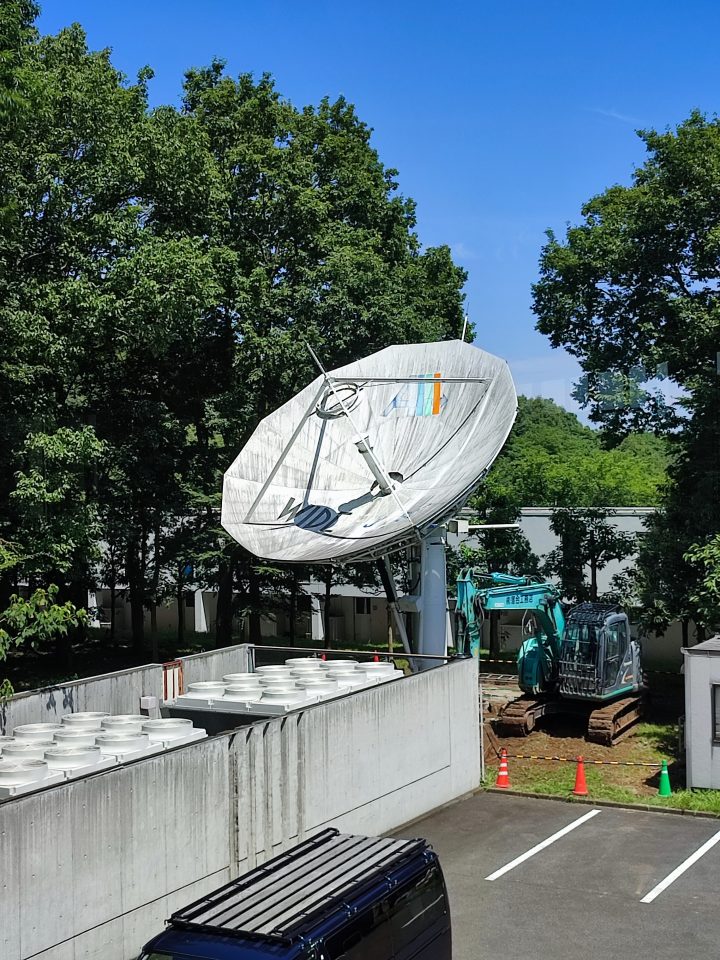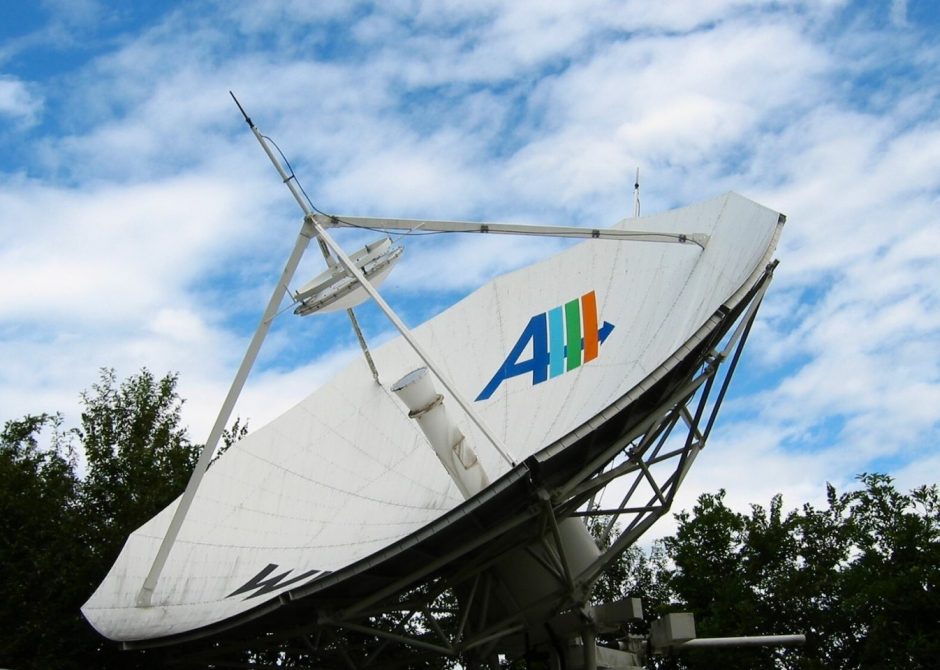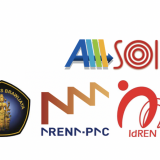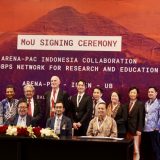The parabolic antenna that had been installed in Keio University Shonan Fujisawa Campus (Japan) and serving for Asia-wide Satellite Internet communication for a long time – a C-band earth station facility – was decommissioned on August 3, 2022.
It was a large antenna with a diameter of 7.6 meters and a transmitting power of 100 watts, which is rare in the private sector.
This parabolic antenna was installed in October 1999 to demonstrate research on satellite Internet. It was part of a joint research project by Keio University, Nara Institute of Science and Technology (NAIST), the Communications Research Laboratory (CRL) of the Ministry of Posts and Telecommunications (now the National Institute of Information and Communications Technology, NICT), and Japan Satellite Systems Inc (now SKY Perfect JSAT Corp). This joint research was named the AI3 Project (Asian Internet Interconnection Initiatives Project) and was headed by Professor Jun Murai of Keio University and Professor Suguru Yamaguchi of NAIST.
AI3 recruited joint research partners from universities in the Southeast Asia region, and the partner institutions also installed C-band earth station facilities to connect to SFC via the Internet. Ultimately, 13 countries were connected to this antenna, creating a communications infrastructure covering all of Southeast Asia. (Indonesia, Laos, Myanmar, Thailand, Malaysia, Vietnam, Philippines, Cambodia, Bangladesh, Nepal, East Timor, Singapore, and Mongolia)

There are three main outcomes of AI3.
First, a great deal of research has been done on satellite Internet. The AI3 network served as a test bed for satellite Internet research, which is rare in the world.
Second, AI3 contributed to the deployment of the Internet in Southeast Asia, where the Internet boom was already underway in Japan in the late 1990s and early 2000s, but many countries in Southeast Asia were “just getting started”. In some countries, Internet access through these antennas was the catalyst for Internet diffusion.
Third, AI3 contributed to the development of human resources in Southeast Asia; many of the Southeast Asian researchers involved in AI3 are now active in research institutes, government agencies, and private companies as “first-generation Internet researchers” in their countries, supporting the Internet in this region.
The AI3 network and the antennas that were at the core of the AI3 network have produced many results, but as the facilities became obsolete, it became necessary to rebuild or decommission the equipment. The “5G interference problem” influenced the decision to decommission the antennas. The antenna was found to be hindering the introduction of 5G in the vicinity of SFC because the frequencies of the C-band used by AI3 and those used by 5G are close to each other, causing interference.
We repeatedly discussed whether the valuable testbed network should be discontinued for 5G, or whether it should be allowed to continue since we have a vested interest in the use of the radio waves. We then decided to give priority to 5G for the happiness of SFC and its neighbors.
The antenna, which had produced many research results, supported the development of the Internet in Southeast Asia, and had been a symbol of SFC for many years, quietly ended its role on August 3, 2022 during the campus summer break. The radio waves that were used for research and for Southeast Asia will now support the daily lives of everyone at SFC in the form of 5G cell phone use.
The AI3 research community will move on to the next phase of the research utilizing space & non-terrestrial communication technology in various ways for 100% internet coverage of the earth.
By Haruhito Watanabe, senior researcher
Keio Research Institute at SFC
Japanese version of this article was published on Keio SFC’s website: (Click here)
Please enjoy antenna photos:(Click here)



